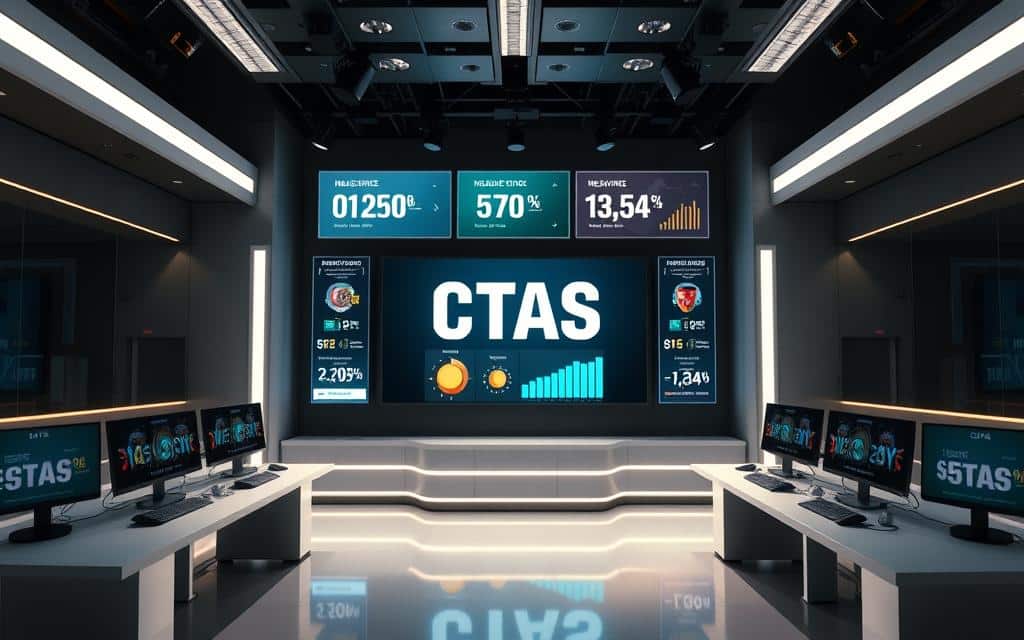TV advertising delivers unmatched reach and credibility, but measuring its true impact often feels like guessing in the dark. Brands invest heavily in campaigns, yet connecting ads to real-world results—like website traffic, app downloads, or sales—remains a persistent challenge. If you’ve ever wondered whether your commercials are driving action or just fading into background noise, this guide unlocks the solutions.
Modern strategies blend traditional metrics like brand recall with advanced tools such as automatic content recognition (ACR) and cross-channel attribution. These methods reveal not just who saw your ad, but how it influenced their behavior. For example, pairing TV spots with unique URLs or promo codes bridges the gap between viewer engagement and measurable outcomes.
This step-by-step approach simplifies tracking performance across streaming and linear platforms. You’ll learn to leverage data from set-top boxes, integrate analytics tools, and refine campaigns using real-time insights. No more flying blind—your strategy will align creative storytelling with hard numbers.
Key Takeaways
- TV advertising’s broad reach requires combining traditional and modern measurement techniques.
- Advanced tools like ACR and marketing mix modeling reveal hidden campaign impacts.
- Unique URLs, promo codes, and CTAs link ads directly to website traffic or conversions.
- Integrating TV metrics with digital analytics provides a holistic view of performance.
- Real-time data from smart TVs helps optimize ad frequency and audience targeting.
Understanding TV Advertising & Its Measurability
The journey from Nielsen ratings to real-time analytics reshaped media strategies. Today’s marketers blend decades-old methods with cutting-edge tools to quantify what once seemed intangible.
The Evolution of Measurement Technology
In the 1960s, Nielsen’s audience panels dominated media planning. These surveys estimated broad demographic reach but couldn’t confirm if viewers saw specific ads. Fast-forward to streaming-era innovations:

Automatic Content Recognition (ACR) tracks second-by-second viewing habits on smart devices. Set-top boxes reveal which households skip commercials. This granular data connects ad exposure to actions like website visits or app installs.
Traditional Metrics vs. Advanced Analytics
While legacy systems focused on volume, modern tools measure behavior. Compare core differences:
| Metric Type | Key Focus | Data Source | Strategic Value |
|---|---|---|---|
| Gross Rating Points (GRPs) | Estimated audience size | Sample surveys | Budget allocation |
| Attribution Models | Cross-channel impact | Device-level tracking | Campaign optimization |
| Brand Lift Studies | Purchase intent shifts | Pre/post-ad surveys | Creative effectiveness |
Combining both approaches creates a complete picture. For example, GRPs identify potential reach, while attribution models prove which ads drove sales. This fusion helps refine creative messaging and budget distribution across channels.
Crafting a Measurable TV Ad Campaign
Success in modern marketing demands campaigns designed for accountability. Start by defining objectives that balance immediate sales boosts with long-term brand awareness. Clear goals turn vague ad spend into measurable outcomes.
Strategic Campaign Planning for Better Results
Set KPIs tied to business priorities—like website traffic spikes during airtimes or promo code redemptions. For example, a beverage company might target 15% sales growth in regions where ads air. Use tools like Nielsen’s reach estimates combined with real-time streaming data to refine audience targeting.

Integrating Clear Calls-to-Action and Web Tracking
Direct viewers with time-sensitive prompts: “Visit [URL] this week for 20% off.” Unique URLs or vanity phone numbers connect ad exposure to conversion metrics. Sync these with Google Analytics to monitor surges in mobile traffic after prime-time spots.
Pair traditional metrics like GRPs with digital engagement rates. If a campaign achieves high recall but low site visits, adjust CTAs or offer urgency. This blend reveals which creative elements drive action—and which need reworking.
how to track tv advertising: Techniques and Tools
Measuring campaign impact requires merging real-time data streams with predictive analytics. Modern tools decode viewer behavior patterns, revealing what drives engagement and conversions.
Leveraging ACR and Set-Top Box Data
Automatic Content Recognition (ACR) captures second-by-second viewing habits across smart devices. This reveals which households watch specific ads and for how long. Combined with set-top box metrics, you gain household-level insights into commercial retention rates.
For example, a car brand might discover ads airing during sports events retain 22% more viewers. This data helps refine ad placement and creative pacing to maximize attention spans.
Utilizing Marketing Mix Modeling and Attribution Models
Marketing mix modeling (MMM) evaluates long-term effects across channels. It quantifies how TV efforts amplify digital campaigns or in-store visits months later. Attribution models then pinpoint which ad exposures directly influenced sales.
Pair these methods to balance immediate results with brand-building. One retail chain found 35% of online purchases traced back to TV spots through multi-touch attribution. This clarity fuels smarter budget splits between performance-driven and awareness-focused media.
Exploring Cross-Channel Impacts of TV Ads
Brands often overlook the ripple effects of their media strategies. When commercials air, they spark activity far beyond living rooms—boosting search queries, social shares, and website traffic through a phenomenon called the halo effect.
The Silent Multiplier: Halo Effect Explained
This spillover occurs when viewers engage with brands across multiple touchpoints after seeing campaigns. A WARC study found businesses combining TV and digital efforts saw 35% higher conversion rates than single-channel approaches.
Consider these measurable cross-channel impacts:
- Search volume spikes: 42% increase in branded keywords post-campaign (Google/WARC data)
- Social mentions: 28% rise during ad airtimes
- Direct traffic: 19% lift in visitors typing URLs manually
Smart attribution connects these dots. One retail chain discovered 60% of online sales started with TV exposure. By syncing airtime logs with web analytics, they traced customer journeys from couch to cart.
| Metric | Pre-Campaign | Post-Campaign |
|---|---|---|
| Branded Searches | 1,200/day | 1,704/day |
| Social Engagement | 4.2% rate | 5.4% rate |
| Direct Conversions | 18% of sales | 22% of sales |
Track incremental changes using UTM parameters and time-stamped data. Pair this with marketing mix models to quantify long-term brand awareness boosts. The true power emerges when TV’s reach amplifies digital precision—turning casual viewers into loyal customers.
Conclusion
Accurate measurement transforms how brands validate their media investments. By combining tools like ACR and marketing mix modeling, you bridge the gap between audience reach and provable outcomes. These strategies turn vague viewer impressions into actionable insights—revealing which campaigns drive search spikes, app downloads, or in-store sales.
Integrate traditional metrics with digital attribution for full-channel clarity. When TV spots air, monitor real-time data from multiple sources: website traffic surges, social mentions, and promo code redemptions. This approach exposes hidden connections between ad exposure and consumer behavior across platforms.
Future-proof your strategy by embracing blended analytics. Pair Nielsen’s demographic insights with device-level tracking to refine targeting. Test urgency-driven CTAs or unique URLs to measure immediate performance shifts. Every metric—from brand lift studies to cross-channel attribution—fuels smarter budget decisions.
Now’s the time to audit your current methods. Are you capturing TV’s ripple effect on sales and brand loyalty? Adopt these measurement frameworks to transform commercials from cost centers into growth engines.